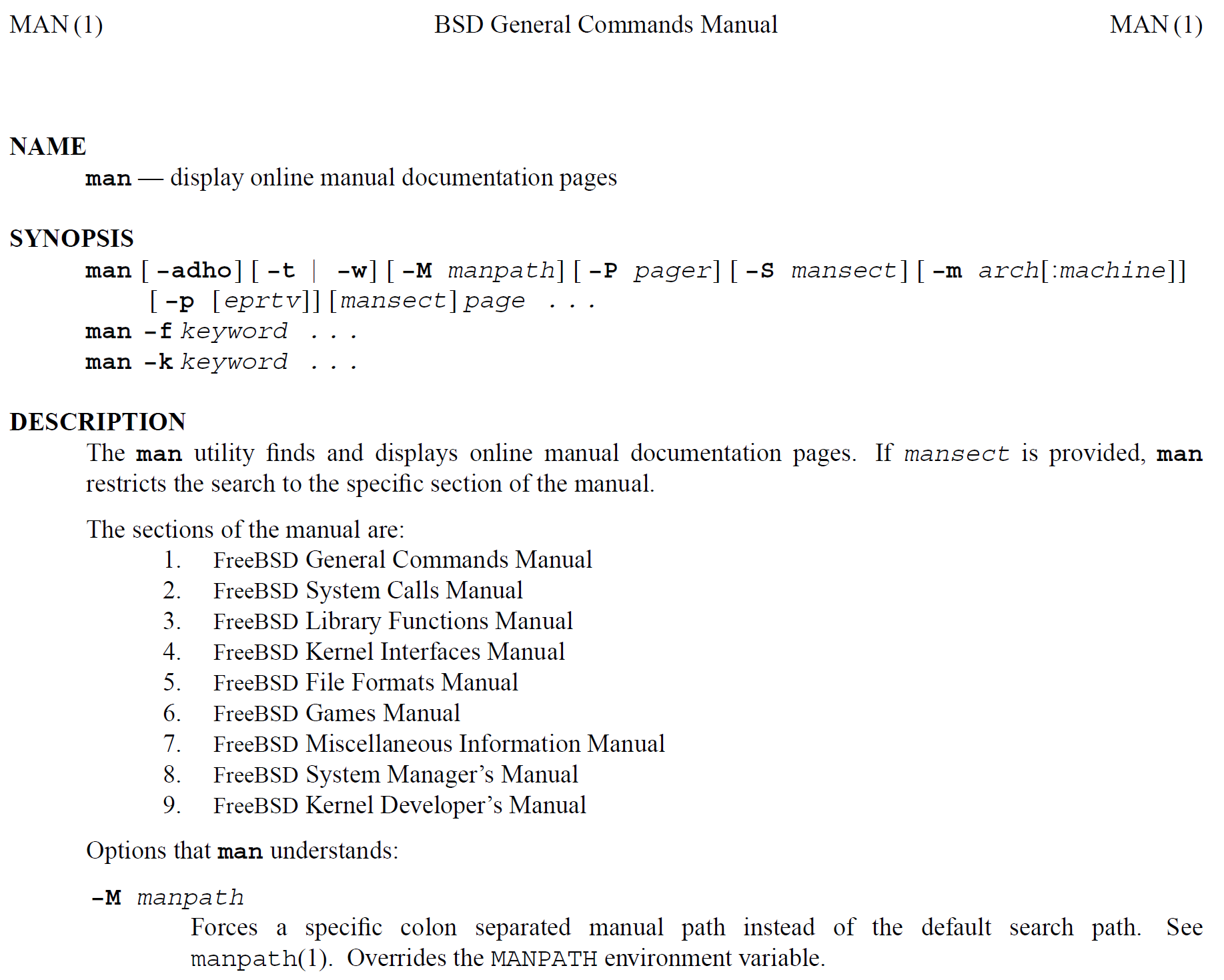|
DocBook XSL
The DocBook XSL stylesheets are a set of XSLT stylesheets for the XML-based DocBook language. Purpose DocBook is a semantic markup language. That is, it specifies the meaning of the elements in a document, not how they are intended to be presented to the end user. It provides separation between the content of the document and the visual representation. While DocBook is a readable markup language, it is not intended to be read by end-users in its DocBook form. The purpose of DocBook XSL is to provide a standard set of transformations from DocBook to several presentational formats. Output formats DocBook XSL provides for transforms into the following formats: *HTML, both as single pages and in a "chunked" format that outputs sections to different pages. *XHTML *XSL-FO, and from there, usually PDF *Man Pages *WebHelp Web help Webhelp is a chunked HTML output format in the DocBook xslt stylesheets that was introduced in version 1.76.1. The documentation for web help also pro ... [...More Info...] [...Related Items...] OR: [Wikipedia] [Google] [Baidu] |
XSLT
XSLT (Extensible Stylesheet Language Transformations) is a language originally designed for transforming XML documents into other XML documents, or other formats such as HTML for web pages, plain text, or XSL Formatting Objects. These formats can be subsequently converted to formats such as PDF, PostScript, and PNG. Support for JSON and plain-text transformation was added in later updates to the XSLT 1.0 specification. XSLT 3.0 implementations support Java, .NET, C/C++, Python, PHP and NodeJS. An XSLT 3.0 JavaScript library can also be hosted within the web browser. Modern web browsers also include native support for XSLT 1.0. The XSLT document transformation specifies how to transform an XML document into new document (usually XML, but other formats, such as plain text are supported). Typically, input documents are XML files, but anything from which the processor can build an XQuery and XPath Data Model can be used, such as relational database tables or geographical inform ... [...More Info...] [...Related Items...] OR: [Wikipedia] [Google] [Baidu] |
DocBook
DocBook is a Semantics (computer science), semantic markup language for technical documentation. It was originally intended for writing technical documents related to computer hardware and software, but it can be used for any other sort of documentation. As a semantic language, DocBook enables its users to create separation of presentation and content, document content in a presentation-neutral form that captures the logical structure of the content; that content can then be published in a variety of formats, including HTML, XHTML, EPUB, Portable Document Format, PDF, Manual page (Unix), man pages, WebHelp and Microsoft Compiled HTML Help, HTML Help, without requiring users to make any changes to the source. In other words, when a document is written in DocBook format it becomes easily portable into other formats, rather than needing to be rewritten. Design DocBook is an XML language. In its current version (5.x), DocBook's language is formally defined by a RELAX NG XML schema, ... [...More Info...] [...Related Items...] OR: [Wikipedia] [Google] [Baidu] |
Separation Of Presentation And Content
Separation of content and presentation (or separation of content and style) is the separation of concerns design principle as applied to the authoring and presentation of content. Under this principle, visual and design aspects (presentation and style) are separated from the core material and structure (content) of a document. A typical analogy used to explain this principle is the distinction between the human skeleton (as the structural component) and human flesh (as the visual component) which makes up the body's appearance. Common applications of this principle are seen in Web design (HTML vs. CSS) and document typesetting (LaTeX body vs. its preamble). Use in Web design This principle is not a rigid guideline, but serves more as best practice for keeping appearance and structure separate. In many cases, the design and development aspects of a project are performed by different people, so keeping both aspects separated ensures both initial production accountability and later ... [...More Info...] [...Related Items...] OR: [Wikipedia] [Google] [Baidu] |
HTML
Hypertext Markup Language (HTML) is the standard markup language for documents designed to be displayed in a web browser. It defines the content and structure of web content. It is often assisted by technologies such as Cascading Style Sheets (CSS) and scripting languages such as JavaScript, a programming language. Web browsers receive HTML documents from a web server or from local storage and browser engine, render the documents into multimedia web pages. HTML describes the structure of a web page Semantic Web, semantically and originally included cues for its appearance. HTML elements are the building blocks of HTML pages. With HTML constructs, HTML element#Images and objects, images and other objects such as Fieldset, interactive forms may be embedded into the rendered page. HTML provides a means to create structured documents by denoting structural semantics for text such as headings, paragraphs, lists, Hyperlink, links, quotes, and other items. HTML elements are delineated ... [...More Info...] [...Related Items...] OR: [Wikipedia] [Google] [Baidu] |
XHTML
Extensible HyperText Markup Language (XHTML) is part of the family of XML markup languages which mirrors or extends versions of the widely used HyperText Markup Language (HTML), the language in which Web pages are formulated. While HTML, prior to HTML5, was defined as an application of Standard Generalized Markup Language (SGML), a flexible markup language framework, XHTML is an application of XML, a more restrictive subset of SGML. XHTML documents are well-formed and may therefore be parsed using standard XML parsers, unlike HTML, which requires a lenient HTML-specific parser. XHTML 1.0 became a World Wide Web Consortium (W3C) recommendation on 26 January 2000. XHTML 1.1 became a W3C recommendation on 31 May 2001. XHTML is now referred to as "the XML syntax for HTML" and being developed as an XML adaptation of the HTML living standard. Overview XHTML 1.0 was "a reformulation of the three HTML 4 document types as applications of XML 1.0". The World Wide Web Consortiu ... [...More Info...] [...Related Items...] OR: [Wikipedia] [Google] [Baidu] |
XSL Formatting Objects
XSL-FO (XSL Formatting Objects) is a markup language for XML document formatting that is most often used to generate PDF files. XSL-FO is part of Extensible Stylesheet Language, XSL (Extensible Stylesheet Language), a set of W3C technologies designed for the transformation and formatting of XML data. The other parts of XSL are XSL Transformations, XSLT and XPath. Version 1.1 of XSL-FO was published in 2006. XSL-FO is considered feature complete by W3C: the last update for the Working Draft was in January 2012, and its Working Group closed in November 2013. Basics Unlike the combination of HTML and Cascading Style Sheets, CSS, XSL-FO is a unified presentational language. It has no semantic markup as this term is used in HTML. And, unlike CSS which modifies the default presentation of an external XML or HTML document, it stores all of the document's data within itself. The general idea behind XSL-FO's use is that the user writes a document, not in FO, but in an XML language. XHTM ... [...More Info...] [...Related Items...] OR: [Wikipedia] [Google] [Baidu] |
Manual Page (Unix)
A man page (short for manual page) is a form of software documentation found on Unix and Unix-like operating systems. Topics covered include programs, system libraries, system calls, and sometimes local system details. The local host administrators can create and install manual pages associated with the specific host. A manual end user may invoke a documentation page by issuing the man command followed by the name of the item for which they want the documentation. These manual pages are typically requested by end users, programmers and administrators doing real time work but can also be formatted for printing. By default, man typically uses a formatting program such as nroff with a macro package or mandoc, and also a terminal pager program such as more or less to display its output on the user's screen. Man pages are often referred to as an ''online'' form of software documentation, even though the man command does not require internet access. The environment variable MAN ... [...More Info...] [...Related Items...] OR: [Wikipedia] [Google] [Baidu] |
WebHelp
Webhelp was a multi-national business process outsourcing headquartered out of Toronto. In 2023, Concentrix bought Webhelp. History Founding and Early Years Webhelp was founded in 1999 in Toronto, Canada, by Kerry Adler and Laura Hantho. This innovative endeavor, initially launched as Webhelp.com Inc., was a Delaware-registered corporation headquartered in Toronto. The company was established with a vision to revolutionize customer service through human-assisted online search and customer service technology. The early business model of Webhelp centered on providing real-time, human-assisted customer support via online chat, making it one of the pioneering ventures in outsourced customer experience solutions (CX). The company’s proprietary ARENA software solution was pivotal in its operations, facilitating back-office processing and online assistance. Within its first year, Webhelp secured major clients, including industry giants Microsoft, AOL, and Sony. This rapid acquisiti ... [...More Info...] [...Related Items...] OR: [Wikipedia] [Google] [Baidu] |
EPUB
EPUB is an e-book file format that uses the ".epub" file extension. The term is short for ''electronic publication'' and is sometimes stylized as ''ePUB''. EPUB is supported by many e-readers, and compatible software is available for most smartphones, tablets, and computers. EPUB is a technical standard published by the International Digital Publishing Forum (IDPF). It became an official standard of the IDPF in September 2007, superseding the older Open eBook (OEB) standard. The Book Industry Study Group endorses EPUB 3 as the format of choice for packaging content and has stated that the global book publishing industry should rally around a single standard. Technically, a file in the EPUB format is a ZIP (file format), ZIP archive file consisting of XHTML files carrying the content, along with images and other supporting files. EPUB is the most widely supported vendor-independent XML-based e-book format; it is supported by almost all hardware readers and many software readers a ... [...More Info...] [...Related Items...] OR: [Wikipedia] [Google] [Baidu] |
Typesetting Software
Typesetting is the composition of text for publication, display, or distribution by means of arranging physical ''type'' (or ''sort'') in mechanical systems or ''glyphs'' in digital systems representing '' characters'' (letters and other symbols).Dictionary.com Unabridged. Random House, Inc. 23 December 2009Dictionary.reference.com/ref> Stored types are retrieved and ordered according to a language's orthography for visual display. Typesetting requires one or more fonts (which are widely but erroneously confused with and substituted for typefaces). One significant effect of typesetting was that authorship of works could be spotted more easily, making it difficult for copiers who have not gained permission. Pre-digital era Manual typesetting During much of the letterpress era, movable type was composed by hand for each page by workers called compositors. A tray with many dividers, called a case, contained cast metal '' sorts'', each with a single letter or symbol, but ... [...More Info...] [...Related Items...] OR: [Wikipedia] [Google] [Baidu] |


